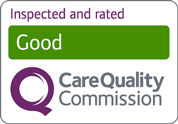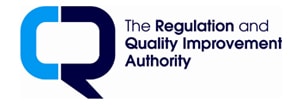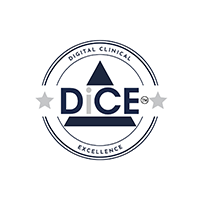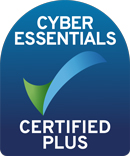What is cystic acne?
Written by Dr Sameer Sanghvi
Cystic acne is another term for severe acne that causes large, pus-filled, painful spots to develop on the skin. These spots are known as cysts, and they’re prone to bursting and causing permanent scarring.
If you’re worried that you might have cystic acne, read on for a guide to symptoms and treatments.
What does cystic acne look like?
Cystic acne looks like pus-filled spots on your skin. They also resemble boils and they can be large and painful. Cystic acne causes inflammation and can make skin appear red and feel bumpy.
An acne cyst may be:
- A lump under the skin
- Red
- Tender or painful
- Crusty or oozing pus
- Range in size from a pea to a coin
They can appear across your face including your chin, forehead, cheeks. You may also have cystic acne on your chest and back.
What causes cystic acne?
Acne occurs when the hair follicles in the skin become blocked with sebum and dead skin cells. If a blocked follicle becomes infected from bacteria on the skin (which is normally harmless), it can develop into a spot.
We don’t fully understand why some people are more likely to have acne than others, or why for some people it’s severe enough to cause cysts. What we do know is that people with acne produce too much sebum from their sebaceous glands. This substance is designed to lubricate the skin, but in people with acne, the body makes too much.
Cystic acne can be caused by:
1. Hormonal changes
It’s thought that hormones play a big role in acne, which is why it’s common for teenagers to first get spots when they go through puberty. Having your period or going through pregnancy can cause acne too.
Women with polycystic ovary syndrome (PCOS) – a condition where women have high levels of “male” hormones – are also prone to acne for the same reason.
2. Certain medications
Taking medication like steroids or lithium can cause flare-ups. If you think medication might be causing your acne flare-ups, talk to your prescribing doctor to see if there’s an alternative.
3. Smoking
Smoking can set off symptoms and cause particularly bad flare-ups. Making changes like quitting smoking can help to improve your acne.
4. Pressure on skin
Putting pressure on the skin e.g. by wearing a headband or backpack can cause flare-ups.
5. Family history
Another risk factor for acne is a family history of the condition. If your parents or siblings have it, you’re more likely to have it too.
Can birth control cause cystic acne?
A common side effect of progestogen-only pills (mini pills) is acne. You might find that when taking this type of pill you have an outbreak of acne including cystic acne. You can find out more about the pill and acne in our guide.
How long does cystic acne last?
How long cystic acne lasts varies from person to person. If you’re experiencing cystic acne you should visit your GP as soon as possible. Starting treatment promptly will help lower your risk of any permanent scarring. Find out more by reading this article: Acne scars.
You might find that your acne improves over the summer months and gets worse during winter. However cystic acne doesn’t go away on its own. Finding an acne treatment that works for you can help clear it sooner.
How to treat cystic acne
In the case of cystic acne, treatment can be tricky because the symptoms are so severe. However, there are some prescription treatments that can help. If you’re experiencing cystic acne, you should visit your GP.
Best medication for cystic acne
When you visit your doctor about your cystic acne, the possible treatment options available will be based on the severity of your acne:
- Retinoids and other topical treatments - these treatments applied directly to the skin help to exfoliate the skin by removing dead skin cells. This prevents dead skin building up in the follicles. Topical treatments include Benzoyl Peroxide and azelaic acid. Find out more about what Benzoyl Peroxide does here.
- Oral antibiotics - help prevent your blocked follicles from getting infected with bacteria.
- Isotretinoin - which is branded as Roaccutane and Rizuderm. These medications are prescribed under the supervision of a dermatologist. This type of treatment can be really effective in treating cystic acne, but it’s associated with some serious side effects, so it won’t be right for everyone. Isotretinoin works by reducing the amount of sebum your body produces, preventing the follicles from getting blocked and infected, and reducing redness and swelling.
If you’re a woman, your GP might prescribe a combined contraceptive pill, or a hormonal treatment like co-cyprindiol
Cystic acne treatment at home
There’s a common misconception that acne can be treated by keeping your face clean, but this isn’t the case. Having a good skincare routine can help, but it won’t solve the underlying problem, which is that your skin produces too much sebum.
Making sure to eat a healthy balanced diet is a great way to support skin health. Many people believe that certain foods like dairy cause acne. However there’s not enough research to support changing your diet to improve your acne.
LloydsPharmacy Online Doctor Acne Clinic
If you aren’t able to see your GP, or you simply prefer the convenience of ordering online, visit our Acne clinic. We supply a range of treatments for severe acne that can be safely prescribed through our secure online system.
Simply fill out a short, confidential consultation for one of our doctors to check and they’ll recommend you treatment. If they think the treatment isn’t right for you, or if there’s a better treatment for your symptoms, they’ll let you know. Approved treatments can be sent to your nearest ParcelShop for collection or delivered to your home address.
Best treatment for cystic acne scars
Cystic acne can cause scarring on the face and body if the cysts burst and damage the skin. Scarring can also occur if you scratch, pick or squeeze your spots. You might notice small, deep holes (ice pick scars) or craters (box car scars), or that your skin has an uneven and bumpy appearance (rolling scars).
Treatment is available for these kinds of acne scars, but it involves cosmetic surgery techniques like dermabrasion, laser treatment, and excision. These treatments are usually not available for free on the NHS.
References
https://www.nhs.uk/conditions/acne/
https://www.nhs.uk/conditions/acne/causes/
https://www.nhs.uk/conditions/acne/treatment/
https://www.nhs.uk/conditions/acne/complications/





